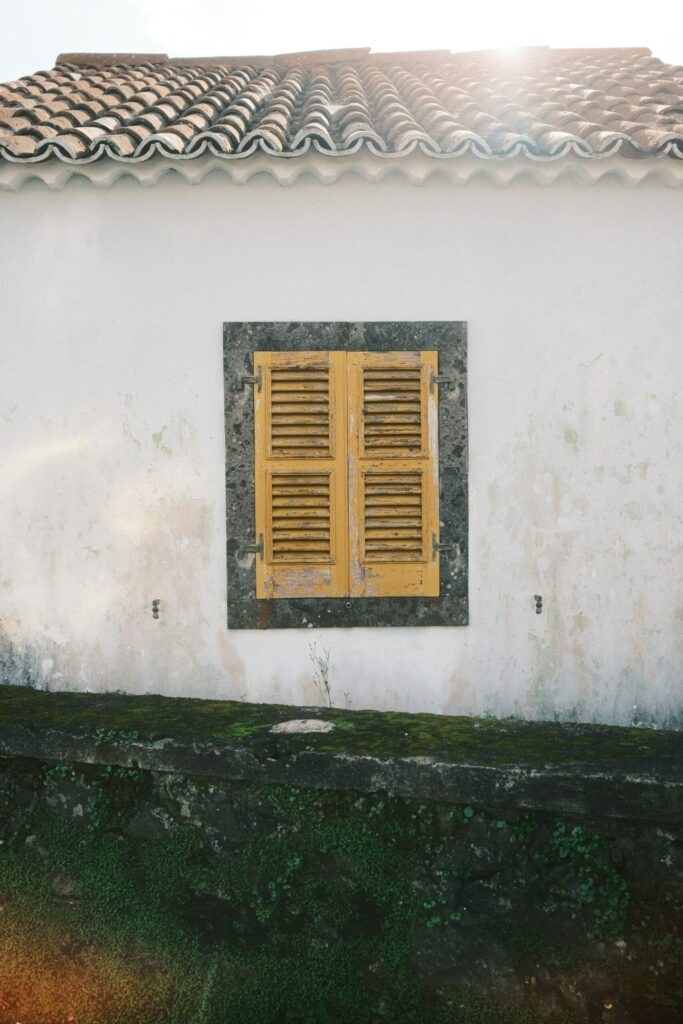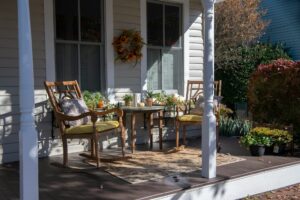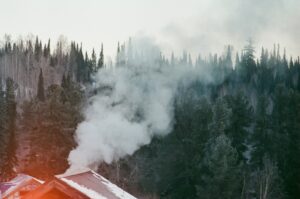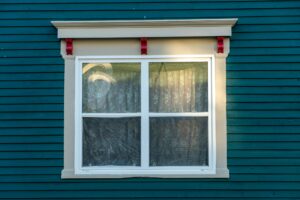There’s a widespread misconception that mold and mildew grow only in dark, damp basements or bathrooms. However, for residents in Vancouver, Washington, roof surfaces, especially in the humid summer, often become breeding grounds for these fungi
With so much moisture in the Pacific Northwest air, staying on top of regular roof upkeep can mean the difference between a mold-free, healthy home and a persistent, costly infestation
Summer provides a perfect window of opportunity to get outside, assess your roof’s condition, and take proactive measures. This guide takes a deep look at the science behind mold growth, what it looks like on your roof, and how to prevent and remove it effectively
Understanding Mold and Mildew
Mold and mildew are fungi that thrive in environments blending moisture, warmth, and organic matter. In Vancouver’s climate, frequent rainfall and high humidity levels create a steady supply of moisture, particularly when summer transitions from mild temperatures to occasional heat spells
The roofing materials, in many cases shingles, tiles, or even wood, can capture water and small particles of organic debris (like leaves or pollen). This subtle layering provides fungi with an ideal home and sufficient nutrients
When mold or mildew take root on a roof, they can spread rapidly. Over time, they may harm not only the roof’s surface but also the underlying roof structure. Unchecked fungal growth weakens shingles and accelerates rot, reducing the roof’s overall lifespan
How Mold Affects Your Home
- Compromised roof integrity: Mold can speed up roof degradation, especially when combined with trapped moisture
- Indoor health impact: Spores and odors can seep into a home’s interior. Those with breathing sensitivities can experience aggravation of symptoms, including sneezing and coughing
- Curb appeal: Dark streaks or discoloration from mold and mildew can diminish your home’s visual charm
Keeping your roof clean and mold-free is as much about preserving your home’s structural well-being as it is about looking after your family’s health and comfort
Summer Roof Maintenance Essentials
Vancouver’s humid summers create a prime environment for mold and mildew. However, a bit of proactive attention keeps your roof healthy and secure
Think of these practices as an organic system that grows and adapts to each summer’s unique climate patterns. Below are some essential steps to protect against mold and mildew:
- Clean Out Gutters and Downspouts
- Trim Trees and Vegetation Around the Roof
- Inspect and Maintain Roofing Materials
- Eliminate Standing Water
- Install Proper Ventilation
- Schedule a Professional Inspection
These six steps blend seamlessly into a continuous cycle of roof care. Each stage flows into the next, ensuring you address the critical needs of your roof and reduce the chance of fungal infestations
1. Clean Out Gutters and Downspouts
- Prevent water accumulation: Clogged gutters trap moisture, leading to pools of water that feed mold and mildew
- Limit organic debris: Leaves and twigs resting in gutters decay over time, bolstering nutritious breeding environments for fungi
- Maintain free drainage: Gutters and downspouts help direct water away from your roof. If they’re clogged, water can seep under shingles and compromise the underlayment
To keep gutters clear, remove debris by hand or use a small trowel. A garden hose can flush out any remnants. The shaped flow of water from your gutters should move elegantly away from the foundation and siding, highlighting a harmonious, adaptable design against Vancouver’s often rainy environment
2. Trim Trees and Vegetation Around the Roof
Trees provide valuable summer shade in Vancouver’s warm months. Yet overhanging branches drop leaves, needles, and twigs directly onto your roof. These can trap moisture and create a perfect setting for mold
- Create an open space: Trim back any overhanging limbs, allowing sunlight and airflow to dry your roof naturally
- Prevent moss buildup: Moss thrives in damp shade. Trimming branches reduces the shady spots where moss often starts, indirectly cutting down on mold potential, too
- Minimize droppings: Fallen leaves, twigs, and organic debris feed mold and mildew. Fewer stray branches reduce the need for frequent sweeping or cleaning
3. Inspect and Maintain Roofing Materials
While undertaking regular homeowner maintenance is proactive, it’s also important to perform a deeper roof inspection at least once every summer. Look out for:
- Damaged shingles: Cracked, curling, or missing shingles often allow moisture to seep through
- Loose flashing: Flashing around vents, skylights, or chimneys can loosen over time, letting in water
- Gaps and cracks: Even small openings invite moisture-laden air and accelerate mold growth
When you spot problems early, you prevent water infiltration. This proactive approach reflectsively adapts to summer’s changing weather, much like an organism anticipating shifts in its environment
Simple repairs, such as reattaching flashing or replacing damaged shingles, can keep your roof healthy for years
4. Eliminate Standing Water
During summer, unexpected rainstorms or sprinklers aimed too high can leave random puddles on flat or low-slope roofs. Besides adding weight, standing water fosters mold and mildew:
- Assess roof slope: Ensure water flows toward gutters without pooling
- Clear blockages: Leaves or debris can dam water, creating shallow pools
- Monitor roof drains: If you have internal roof drains, verify they’re unclogged
A gentle sweep or push of a broom can create a path for the water to flow into gutters or rooftop drains. The responsive goal here is to follow water’s natural movement and guide it efficiently away from your roof
5. Install Proper Ventilation
Ventilation allows air to circulate and moderate the internal temperature of your roof. In the same way that cross-breezes cool a room, effective ventilation reduces moisture buildup:
- Soffit vents: These pull in fresh air from below a roof’s edge
- Ridge vents: Warm, humid air escapes near the roof’s peak
- Exhaust fans: Some larger or more complex roof structures might benefit from powered ventilation features
An airy, well-ventilated attic can drastically lessen the chance that mold spores take hold, because moisture and heat have less opportunity to accumulate. By facilitating the natural flow of air, you keep your home’s roof environment balanced, reflecting nature’s harmonious design
6. Schedule a Professional Inspection
While homeowners can certainly handle many cleaning and maintenance tasks, a professional inspection brings specialized expertise and advanced tools. Certified inspectors spot early signs of mold and mildew, evaluate the structural integrity of your roof, and provide tailored strategies:
- Moisture measurement: Professionals often deploy moisture meters to detect content in roofing materials
- Infrared tools: Thermal imaging helps locate hidden leaks that are not visible to the naked eye
- Comprehensive reports: Detailed assessments guide efficient, targeted solutions
This feedback loop ensures your maintenance efforts remain effective, and any small issues are addressed well before they become significant problems
Cleaning Mold and Mildew from Your Roof
Proactive prevention is your first line of defense. However, if you notice dark patches or stubborn stains, you might need to lean on a hands-on process to clean mold or mildew
Removing existing fungi involves an approach that respects your roof’s surface while effectively destroying the fungal colonies
Assessment and Safety
Before you grab a ladder:
- Check the roof’s condition: Ensure it’s stable and can support foot traffic safely
- Gather protective gear: Use goggles, gloves, and slip-resistant shoes
- Secure the ladder: Place it on even ground and ensure you have a spotter if possible
Cleaning Solutions
Several cleaning solutions help break down mold and mildew:
- Mild detergent and water: A diluted household detergent can clear light buildup
- 50-50 bleach solution: A blend of bleach and water loosens more advanced mold patches. Let it sit for a few minutes before rinsing
- Live enzyme solutions: Eco-friendly enzyme-based cleaners break down organic matter without harsh chemicals
When distributing the chosen solution, use a pump sprayer or gentle brush. Avoid power washing on high pressure, as it can damage shingles by lifting or loosening granules
Gentle Brushing and Rinsing
Let the cleaning solution sit for about 10–15 minutes (or as directed by your product instructions). Then, with a soft-bristle brush, gently scrub the affected areas
This loosens the mold colonies without scraping or tearing shingles. Rinse thoroughly with a garden hose from top to bottom
Work systematically, from the peak downward, so water naturally flows off the roof, removing loosened debris and cleaning agents along the way
Finishing Touches
- Inspect gutters: Any loosened debris can end up causing gutter clogs
- Check for missed spots: Look for faint discolorations that might need additional cleaning
- Apply roof protectants: Some manufacturers offer specialized roof coatings that discourage fungal growth
This process encapsulates the cyclical nature of maintenance, cleaning, checking configurations, and refreshing protective layers all feed back into your broader roof-care plan
Long-Term Prevention and Maintenance
Once you’ve cleaned mold or mildew, preventing recurrence is a matter of consistent, small efforts, akin to tending a garden. Vancouver’s climate shifts require attentiveness throughout the year:
Seasonal checkups: Assess gutters, shingles, and attic ventilation every few months
- Prompt repairs: Address small roofing problems before they become large headaches
- Attic humidity control: Monitor for condensation or damp spots in the attic, using dehumidifiers or upgrading insulation where necessary
- Roof design enhancements: For older homes, consider improvements such as installing a more effective ventilation system or upgrading to mold-resistant roofing materials
Like any well-cultivated environment, your roof thrives on incremental intervention rather than reactive scrambles. By integrating prevention into your routine, you minimize surprises and extend your roof’s lifespan in Vancouver’s moisture-rich air.
When to Call in the Experts
There are times when cleaning or maintaining your roof safely surpasses a homeowner’s comfort level or knowledge base. Large mold infestations, weakened shingles, or older roofing structures may require professional attention. Here are a few indicators:
- Visible sagging or structural concerns: If your roof deck doesn’t seem stable, it’s time for professional assessment
- Persisting mold after repeated cleanings: Recurring mold growth may point to hidden leaks or flawed ventilation
- Health concerns: If you or a family member experiences respiratory issues, consulting a pro can prevent further mold spore spread
Professionals such as roofers, mold remediation experts, and HVAC specialists can coordinate solutions that address the problem from multiple angles, ensuring both the roof’s structure and your indoor environment remain healthy
(For more information on professional roof inspections, this roofing resource outlines what experts commonly look for. You can also learn more about recommended building ventilation standards at the Department of Energy’s website.)
Championing a Healthy Roof Throughout Summer
Living in Vancouver, WA, means gazing at lush evergreen landscapes, enjoying moderate summers, and occasionally contending with persistent humidity. While the damp climate can challenge your roof’s cleanliness, these challenges also encourage a more natural, holistic care strategy, mirroring nature’s own cycles of growth and restoration
By blending consistent maintenance with strategic adjustments to ventilation and roofing materials, homeowners can outsmart mold and mildew, keeping homes fresh and healthy year-round
The path to a mold-free roof weaves prevention, detection, and swift action into one evolving process. Each new summer brims with possibilities, sun-drenched afternoons offering the perfect stage to step onto the roof and run through basic checks
With vigilance and a willingness to adapt, you’ll shape a stable, vibrant environment for your home and family
Remember: a roof free of mold and mildew is more than a superficial concern. It’s a sign of deep resilience, reflecting a homeowner’s ongoing commitment to sustain the integrity of the entire house
With diligence, small steps, and a dynamic approach to changing weather patterns, your Vancouver roof will remain a strong, healthy shield against the region’s famous moisture, today, throughout the summer, and for many seasons to come




